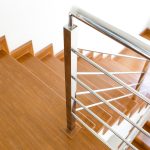The purpose of rheology is to measure the flow of a liquid under specific conditions. These conditions include elevated temperatures, force as well as shear rate. Through the use of capillary rheology, specific factors are controlled to allow for a full spectrum of data to be collected on a test material.
Unlike other types of tests, this is not a single point test, but rather multiple data points throughout time. This provides a final curve of plotted data to allow engineers to determine the effectiveness of a particular rubber, polymer or plastic under specific conditions.
Often the materials tested using capillary rheology are used in injection molding processes, but there are other applications for these materials that require the use of a capillary rheometer to provide specific data about the material’s capacity. While shear viscosity and pressure drop are often the critical measurements, the flow properties of extensional viscosity, thermal stability, extrudate swell and melt strength can also be effectively measured.
The Process of Testing
The capillary rheometers used today are designed to be user-friendly and automated to speed up the testing process. At the same time they also minimize the risk of operator error.
While each model and design of capillary rheometer will have slightly different specific testing protocols, all will begin with a sample loaded into the testing bore. This is a temperature controlled cylinder or barrel that is highly accurate in reaching a specific pre-set temperature and maintaining that temperature over the time required.
The specific capillary die is selected for the material being tested. Each capillary die is made to be completely uniform throughout, ensuring a reproducible and accurate measurement across multiple types of capillary rheology testing devices. The capillary die is secured at the bottom of the barrel prior to testing.
A piston under specific pressure is used to force the liquid test material through the selected die. The pressure at the die is continually measured during this process. The software will then calculate the sheer viscosity from the speed of the piston, the piston pressure and the specific measurements of the selected capillary die. By varying the shear rate during the testing process data points can be determined that make it possible to compare viscosity and shear rate on a flow curve.
It is also possible to have a rheometer designed with two separate bores. This allows for one bore to test for shear and the other to test for extensional viscosity at the same time. Not only does this speed up the testing process, but it also makes testing more efficient.





